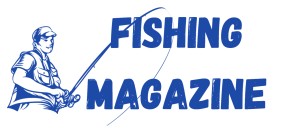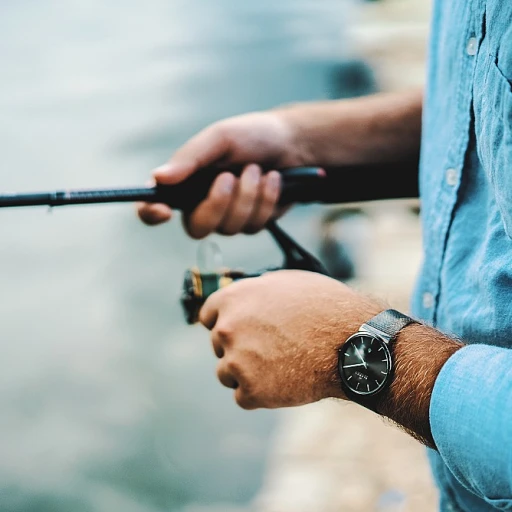
Understanding the role of ball bearing swivels in fishing
How Ball Bearing Swivels Work in Your Fishing Setup
When it comes to recreational fishing, the small details in your tackle can make a big difference. Ball bearing swivels are a core component that many anglers rely on for smooth, tangle-free fishing. Unlike standard barrel swivels, these products use small steel balls inside the swivel body, allowing the swivel to rotate freely even under heavy load. This design reduces line twist, which is a common problem when using spinning lures or fishing in strong currents.
Swivels ball, especially those made from stainless steel, are known for their corrosion resistance and high strength. This makes them ideal for both freshwater and saltwater fishing. The welded rings and solid construction of heavy duty ball bearing swivels ensure that your leader and mainline stay secure, even when targeting larger species. Snap swivels and coastlock snap options add versatility, letting you quickly change lures or rigs without retying knots.
Choosing the right ball bearing swivel is about more than just price or free shipping offers. You’ll want to consider the type of fishing you do, the strength required, and the specific features like welded rings or interlock snap mechanisms. For those who travel to different fishing spots, understanding how to select the best tackle—including the right travel rod—can make your trips more successful. For more tips on optimizing your gear, check out this guide on choosing the right travel rod for your next fishing adventure.
In the next sections, we’ll look at the specific benefits of using ball bearing swivels, how to avoid common mistakes, and how these compare to other swivel types. Whether you’re after saltwater giants or just enjoying a day at the lake, the right bearing swivel can be a game changer in your fishing experience.
Key benefits of using ball bearing swivels
Why Ball Bearing Swivels Stand Out in Your Tackle Box
Ball bearing swivels are a game changer for anglers who want a smoother fishing experience. Unlike standard barrel swivels, these products use a series of tiny steel balls inside the swivel body. This design reduces friction and allows the swivel to rotate freely, even under heavy loads. The result? Less line twist, fewer tangles, and a more enjoyable day on the water.
Key Advantages for Every Angler
- Superior Rotation: The ball bearing mechanism ensures the swivel spins smoothly, which is especially important when using lures or leaders that tend to twist the line. This helps maintain the integrity of your fishing line and tackle.
- Corrosion Resistance: Most ball bearing swivels are made from stainless steel, offering high corrosion resistance. This makes them ideal for both freshwater and saltwater fishing, where durability is a must.
- Strength and Reliability: With welded rings and solid construction, these swivels can handle heavy duty applications. Whether you’re targeting big saltwater species or using strong leaders, the strength of stainless steel ball bearing swivels gives you confidence.
- Versatile Connections: Many models come with snap, coastlock snap, or interlock snap options. This makes it easy to change lures, leaders, or rigs quickly, saving time and hassle on the water.
- Value for Money: While the price of ball bearing swivels can be higher than basic barrel swivels, the long-term benefits—like fewer lost fish and less tackle replacement—make them a smart investment. Some retailers even offer free shipping on bulk items, which helps offset the cost.
When to Choose Ball Bearing Swivels Over Other Types
If you’re fishing in conditions where line twist is a problem, or you need maximum strength and corrosion resistance, ball bearing swivels are the way to go. They’re especially useful when using split rings, welded rings, or snap swivels in your setup. For anglers who want to get the most out of their tackle, these products offer a clear advantage over standard swivels ball or barrel swivels.
For more tips on optimizing your fishing gear, check out this guide on choosing the right Curado fishing rods for your next fishing trip.
Choosing the right ball bearing swivel for your setup
Factors to Consider When Selecting Ball Bearing Swivels
Choosing the right ball bearing swivel for your fishing setup can make a real difference in your experience on the water. Not all swivels are created equal, and the right product will depend on your target species, environment, and tackle preferences. Here are some important points to keep in mind:
- Material Quality: Stainless steel ball bearing swivels offer excellent corrosion resistance, especially in saltwater conditions. Look for welded rings and solid construction for added strength and durability.
- Strength and Size: Match the swivel’s strength rating to your line and target fish. Heavy duty options are ideal for big game or saltwater fishing, while lighter items suit freshwater setups. Check the product’s weight capacity and opt for high strength welded rings if you’re targeting larger species.
- Swivel Type: Decide between snap swivels, coastlock snap, interlock snap, or barrel swivels. Snap ball and coast lock designs allow for quick lure changes, while split rings and welded rings provide extra security. Swivel coastlock models are popular for their solid locking mechanism.
- Price and Value: Compare prices and look for free shipping offers when buying in bulk. Sometimes, a higher price reflects better quality materials like stainless steel or steel ball bearings, but always check reviews and product details.
- Compatibility: Ensure the swivel fits your leader and tackle. Some bearing swivels come with free rings or welded rings for easy attachment to your fishing line or leader.
For anglers targeting squid or other species that require frequent lure changes, consider reading this guide on choosing the right squid bait to complement your tackle selection.
By focusing on these factors, you’ll be better equipped to select the right ball bearing swivel for your needs, ensuring smooth performance and less line twist on your next fishing trip.
Common mistakes when using ball bearing swivels
Overlooking the Details: Frequent Errors with Ball Bearing Swivels
Ball bearing swivels are a staple in modern fishing tackle, but even experienced anglers can make mistakes that impact performance and gear longevity. Here are some of the most common pitfalls to watch out for when using these essential items:
- Choosing the Wrong Size or Strength: Not all swivels are created equal. Using a ball bearing swivel that is too small for your target species or fishing environment can lead to breakage. Always match the strength rating and size to your leader, line, and the fish you’re after. Heavy duty and high strength models are best for saltwater and big game fishing.
- Ignoring Material Quality: Opting for low-quality or non-stainless steel ball bearing swivels can result in corrosion, especially in saltwater. Stainless steel and welded rings offer superior corrosion resistance and durability. Don’t be tempted by a low price if it means sacrificing product quality.
- Improper Snap or Ring Selection: Snap swivels, coastlock snap, and interlock snap designs each have their place. Using the wrong type can cause tackle failure or make lure changes cumbersome. For example, welded rings and split rings provide extra security, while snap ball and coast lock designs offer quick lure changes.
- Overlooking Maintenance: Failing to rinse your bearing swivels after saltwater use or neglecting to check for grit in the ball bearings can reduce their smoothness and lifespan. Regular cleaning and inspection are key to keeping your tackle in top shape.
- Incorrect Attachment: Attaching your leader or mainline directly to the wrong part of the swivel, or using knots that slip, can lead to lost fish. Make sure to use solid knots and attach to the correct welded or split ring for maximum security.
- Mixing Swivel Types Without Purpose: Barrel swivels and ball bearing swivels serve different functions. Using them interchangeably without understanding their strengths can result in line twist or reduced casting distance.
By paying attention to these details, you can get the most out of your ball bearing swivels and enjoy smoother, more reliable fishing experiences. Always consider the specific needs of your setup and the environment you’re fishing in when selecting and maintaining your tackle.
Comparing ball bearing swivels to other swivel types
How Ball Bearing Swivels Stack Up Against Other Swivel Types
When choosing fishing tackle, understanding the differences between ball bearing swivels and other types like barrel swivels or snap swivels is crucial for both performance and value. Each swivel type has its place, but ball bearing swivels are often the go-to for anglers seeking smooth rotation and reliability, especially in saltwater environments.- Ball Bearing Swivels: These feature internal ball bearings that allow the swivel to rotate freely, reducing line twist even under heavy loads. Stainless steel construction and welded rings add to their strength and corrosion resistance, making them ideal for saltwater fishing and heavy duty setups. They are often paired with snap or coastlock snap for quick leader changes. The price is higher, but the performance justifies the investment for many anglers.
- Barrel Swivels: Simpler in design, barrel swivels use a basic barrel mechanism. They are more affordable and suitable for lighter tackle or freshwater fishing, but they do not offer the same smooth rotation under pressure. Barrel swivels can be prone to sticking, especially when exposed to saltwater or debris.
- Snap Swivels: These combine a swivel with a snap, allowing for quick lure or leader changes. While convenient, the snap can be a weak point, especially if not made from high quality stainless steel. Snap ball and interlock snap versions are popular for their ease of use, but may not match the strength and corrosion resistance of welded ball bearing swivels.
| Swivel Type | Strength | Corrosion Resistance | Smooth Rotation | Price | Best Use |
|---|---|---|---|---|---|
| Ball Bearing Swivel | High | Excellent (stainless steel) | Superior | Higher | Saltwater, heavy duty, welded rings |
| Barrel Swivel | Medium | Good | Moderate | Lower | Freshwater, light tackle |
| Snap Swivel | Varies | Depends on material | Good | Moderate | Quick lure/leader changes |
Maintenance tips to extend the life of your ball bearing swivels
Simple habits for longer-lasting swivels
Keeping your ball bearing swivels in top shape isn’t complicated, but it does require some regular attention. Whether you’re using stainless steel snap swivels, heavy duty welded rings, or coastlock snap models, a few easy steps can make a big difference in both performance and longevity.- Rinse after every trip – Saltwater is notorious for causing corrosion, even on stainless steel or corrosion-resistant products. After each outing, rinse your swivels, snaps, and split rings with fresh water. Pay special attention to welded rings and interlock snap connections where salt can hide.
- Dry thoroughly – Let your tackle air dry completely before storing. Moisture trapped in the ball bearing or inside the snap can lead to rust or reduced bearing action.
- Inspect regularly – Check for signs of wear, such as rough rotation, loose snap closures, or rust on the steel ball or welded rings. Replace any items that don’t spin freely or show visible damage.
- Lubricate moving parts – A drop of light oil on the ball bearing section can help maintain smooth rotation. Avoid over-oiling, as this can attract grit and sand, especially in saltwater environments.
- Store properly – Keep your bearing swivels and snap swivels in a dry tackle box or storage bag. Consider using small containers or tackle trays to prevent tangling with leader lines or other tackle items.
When to replace your swivels
Even high strength, stainless steel ball bearing swivels have a lifespan. If you notice any of the following, it’s time to swap out for a new product:- Stiff or gritty rotation in the bearing
- Visible rust or corrosion, especially on welded rings or snap ball connections
- Deformed or bent snap or split rings
- Loss of strength or failure to hold under load



-large-teaser.webp)









